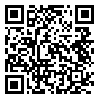BibTeX | RIS | EndNote | Medlars | ProCite | Reference Manager | RefWorks
Send citation to:
URL: http://jdisabilstud.org/article-1-1957-fa.html

 ، علیرضا حیدری*2
، علیرضا حیدری*2 
 ، فریبا حافظی2
، فریبا حافظی2 
 ، پروین احتشام زاده2
، پروین احتشام زاده2 
 ، پرویز عسکری2
، پرویز عسکری2 

2- گروه روان شناسی، واحد اهواز، دانشگاه آزاد اسلامی
چکیده
زمینه و هدف: استفاده از اینترنت و فضای مجازی تأثیرات بسیار عمیقی بر ارزشهای نوجوانان میگذارد. این پژوهش با هدف بررسی تأثیر درمان مثبتگرا بر ارتباطات مثبت خانواده با نوجوان، اعتیاد به اینترنت و بحران هویت در دختران دورۀ متوسطهٔ دوم شهرستان فلاورجان انجام گرفت.
روشبررسی: پژوهش حاضر بهروش نیمهتجربی و با طرح پیشآزمون و پسآزمون همراه با گروه گواه اجرا شد. جامعهٔ آماری پژوهش را دختران نوجوان دورۀ متوسطهٔ دوم شهرستان فلاورجان در سال تحصیلی ۹۸-۱۳۹۷ و والدین آنان تشکیل دادند. بدینمنظور با استفاده از روش نمونهگیری خوشهای چندمرحلهای تعداد چهل نفر از دختران دورۀ متوسطهٔ دوم شهرستان فلاورجان انتخاب شدند و بههمراه والدینشان بهشیوهٔ تصادفی در گروه آزمایش و گروه گواه (هر گروه بیست نفر) قرار گرفتند. در این پژوهش از مقیاس تجدیدنظرشدۀ الگوهای ارتباطی خانواده (کوئرنر و فیتزپاتریک، ۲۰۰۲)، مقیاس کاربری مشکلزا از اینترنت (کاپلان، ۲۰۰۲) و پرسشنامهٔ بحران هویت (صالحی امیری و همکاران، ۱۳۸۸) بهعنوان ابزارهای پژوهش استفاده شد. مداخله شامل هشت جلسهٔ گروهی درمان مثبتگرا برای والدین و نُه جلسهٔ گروهی درمان مثبتگرا برای نوجوانان بود. دادهها با استفاده از آزمون تحلیل کوواریانس چندمتغیره در نرمافزار SPSS نسخهٔ ۲۲ در سطح معناداری ۰٫۰۵ تحلیل شد.
یافتهها: نتایج نشان داد، درمان مثبتنگر در افزایش الگوی ارتباطی گفتوشنود (۰٫۰۰۱>p)، کاهش الگوی ارتباطی همنوایی (۰٫۰۰۱>p)، کاهش اعتیاد به اینترنت (۰٫۰۰۱>p) و کاهش بحران هویت (۰٫۰۰۱>p) در گروه آزمایش مؤثر بود. ضریب تأثیر مداخله بر افزایش الگوی ارتباطی گفتوشنود، کاهش الگوی ارتباطی همنوایی، اعتیاد به اینترنت و بحران هویت بهترتیب ۰٫۷۰، ۰٫۸۱، ۰٫۷۷ و ۰٫۸۲ بهدست آمد.
نتیجهگیری: براساس یافتههای پژوهش نتیجه گرفته میشود، درمان مثبتگرا بر بهبود الگوهای ارتباطی خانواده، اعتیاد به اینترنت و بحران هویت در دختران دورۀ متوسطهٔ دوم مؤثر است؛ همچنین درمان مثبتنگر تلویحات درمانی مفیدی درجهت کار با نوجوانان دارد.
| بازنشر اطلاعات | |
 |
این مقاله تحت شرایط Creative Commons Attribution-NonCommercial 4.0 International License قابل بازنشر است. |


